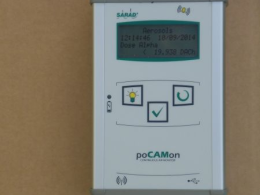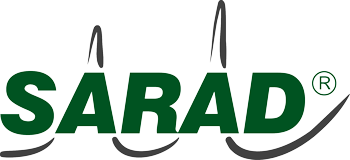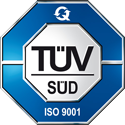Monitoring of airborne activity at workplaces with respect to ISO 16639
Air monitoring with respect to airborne radioactive substances is necessary to protect the health of the employees in all facilities where dispersive radioactive material is used. This can be the case if workers handle powder or liquids containing radio nuclides. But, radioactive aerosols can be also released by mechanical treatment like cutting, grinding, or welding or by cleaning procedures as carried out during dismantling of nuclear facilities.
The ISO 16639 defines a guide line for the implementation of monitoring systems for that purpose. Air monitoring should be performed if the expected intake of activity exceeds two percent of the annual limit for the nuclides of interest. A continuous monitoring is suggested if the expected weekly exposure overrides a threshold of 12 DAC-h, it is mandatory if exposures of more than 40 DAC-h are possible.
In many cases, the activity concentration is not homogenously distributed in the air but varies strongly even in one room. Therefore, the user should take care for the right position of the monitor. The best solution offer instruments which can be worn as personal protection equipment on the body close to the breathing tract. Portable monitors must be positioned with respect to the potential source of radiation, the working place and the local ventilation processes.
The instruments should have fast alarm functionality because high activity concentrations can suddenly appear.
This is realized with so-called online air samplers where sampling and measurement take place simultaneously. The following properties are required:
- "open face" air sampling to avoid deposition of aerosols on surfaces or in tubes before passing the filter,
- online analysis with alert function,
- sufficiently low detection limits for fast alarming and to prevent false alerts,
- low noise emission,
- portability, wearing on the body preferable
- easy handling and low maintenance effort
- compensation of radon daughters
- immediately ready for operation after turning on the instrument
SARAD offers a range of instruments for this application which fulfill the requirements as stated above. They differ in size and flow rate so that the user can chose the right monitor for the particular working conditions.
The poCAMon is a small size monitor which either can be worn on the breast as part of the personal protection equipment or used as portable instrument. The poCAMon is the first choice if the working place must be changed frequently. Exposures of 40 DAC-h can be detected within one minute. In order to measure 12 DAC-h, a sampling interval of 5 minutes is necessary.
If employees work over longer periods at the same site, the Aer 5000 could be the best selection. The Aer 5000 is equipped with a stepwise moving filter which allows a maintenance-free usage of the instrument over long periods even at heavy air pollution. If significantly lower detection limits are desired, the Aer 5200 is recommended. This instrument has wheels for easy portability and allows flow rates up to 50 l/min. Within one minute, an exposure of less than 5 DAC-h can be detected. The Aer 5200 contains a stepping filter unit too.
All monitors offer an additional alpha spectrometer mode. Thus, very small activities can be measured with high accuracy after the exposure period. Detailed information about the detection limits under various conditions is given in the data sheets of the instruments. All detection limits stated here were made with respect to the “worst case” nuclide plutonium having the highest dose coefficient.



